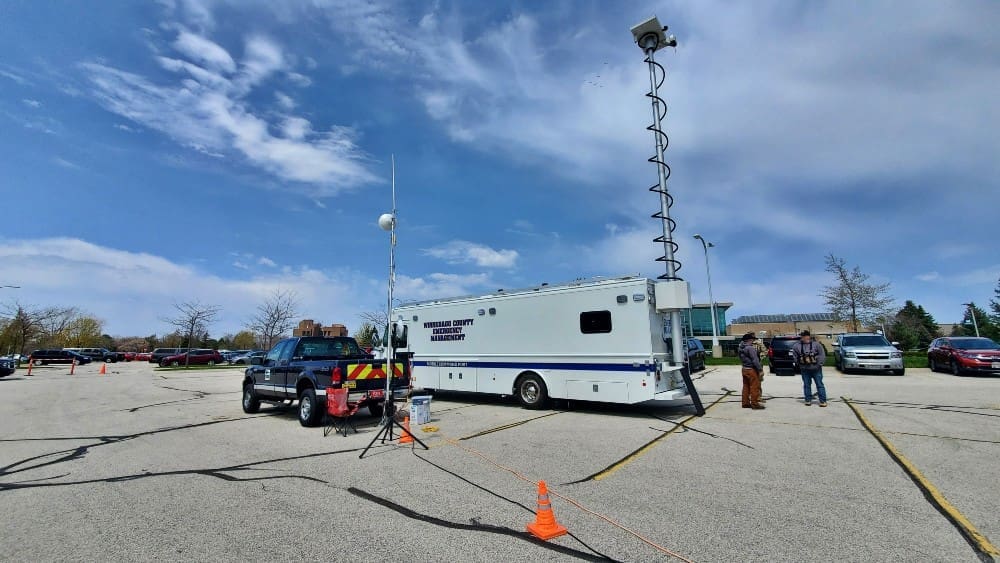
When a disaster or emergency strikes, timely communication is crucial in response efforts. Earlier this month, representatives from all levels of government and amateur radio operators worked together to test the ability to communicate across different platforms during Wisconsin’s State Interoperable Mobile Communication (SIMCOM) exercise.
“This exercise enables organizations to seamlessly communicate in a real-world scenario,” said Maj. Gen. Paul Knapp, Wisconsin’s adjutant general. “It is an ideal place to test and validate communication abilities and know each other prior to a disaster.”
SIMCOM is an annual exercise started by the Wisconsin Department of Military Affairs and coordinated by Wisconsin Emergency Management (WEM) and the Wisconsin National Guard. It is considered one of the top communications exercises in the Midwest, with participants coming from five different states.
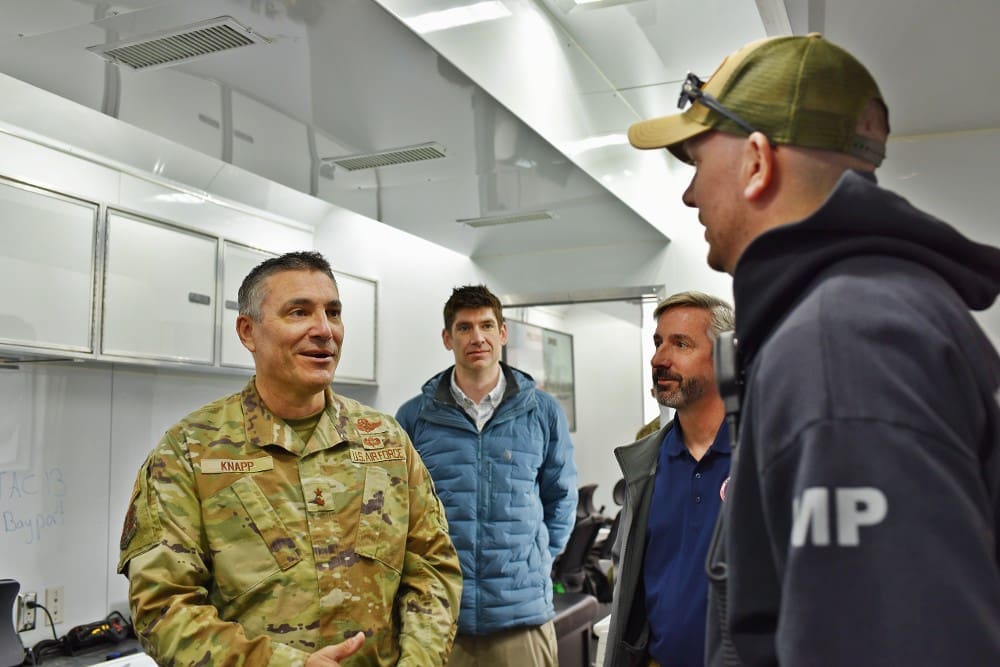
“No emergency response agency works alone and being able to respond to any emergency situation relies heavily on communication,” said Wisconsin Emergency Management Administrator Greg Engle. “Being able to communicate swiftly and effectively is key, especially in the midst of an emergency response, and without it both life and property are at risk.”
SIMCOM allows emergency responders, amateur radio operators and other communications experts to move through the steps necessary to establish interoperable communications between agencies. For 2023, The scenario focused on the aftermath of a fictional storm system that devastated communities and disrupted emergency radio communications, cell phones, and internet capabilities.
In 2023, more than 100 participants representing 60 agencies took part in the SIMCOM exercise. One of the participants was Joe Senulis, with Dane County Amateur Radio Emergency Service (ARES).
“We are licensed through the FCC for emergency communications and are trained operators to help public safety agencies when there is a need for additional emergency communications,” said Senulis. “Exercises like this are a great way to network with other people and talk with others in emergency response agencies to gain their trust and let them know we will not disrupt their response efforts.”
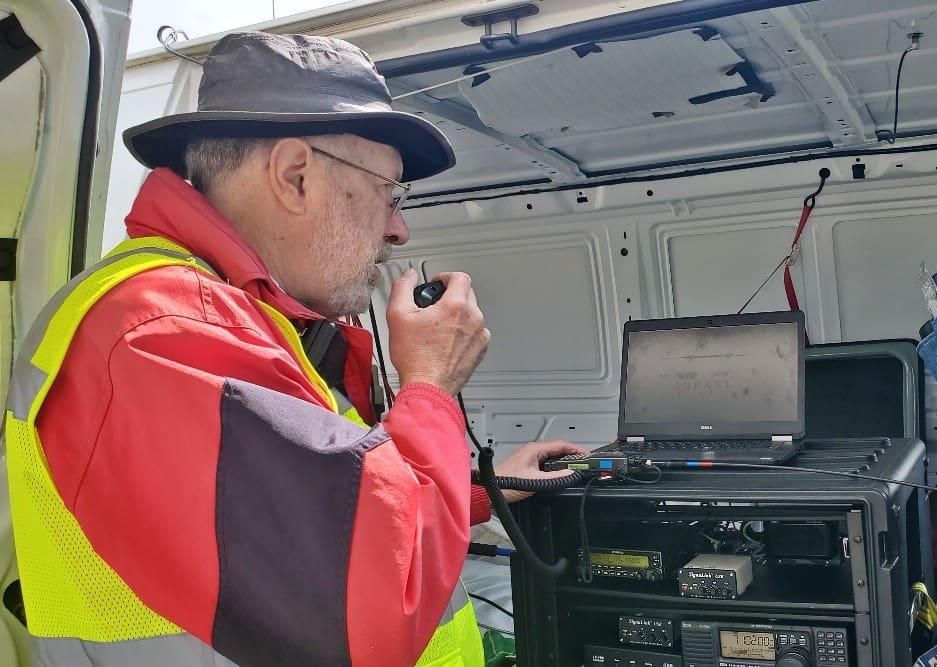
Senulis has not only participated in SIMCOM previously, he volunteered as an amateur radio operator in several responses, from the 1996 Weyauwega train derailment to more recently, monitoring and tracking the mutual aid units responding to the Arcadia Fire in April 2023. He says he enjoys sharing his skills with others at SIMCOM, as well as new members of ARES or Radio Amateur Civil Emergency Service (RACES).
“ARES/RACES groups are some of the largest pool of amateur radio operators trained in public safety communications in the state,” said Senulis. “With my experiences, I get to pass this knowledge on to future amateur radio operators.”
Other organizations that participated in SIMCOM 2023 included the Department of Homeland Security, county and local emergency management agencies, as well as Minnesota Task Force 1. Many participants were located on the UW-Green Bay campus, while others operated roughly 200 miles away at the Eau Claire County Exposition Center.
“Bringing in state trainings and exercises only improve our local ability to respond in disaster situations” said Tyler Esh, Eau Claire County Emergency Management Coordinator. “This gives us a unique opportunity to see how state resources like Wisconsin Task Force 1 and Minnesota Task Force 1 can integrate with our local efforts.”
One of the capabilities being tested this year was aviation. The Green Bay Metro Fire Department was one of the participants that brought their drone to SIMCOM.
“The drone has been an asset to not only the fire department but the City of Green Bay,” said Green Bay Metro Fire Captain Dan Chatham. “We are able to provide an additional point of view that didn’t previously exist and it’s been used in several instances like missing person searches.”
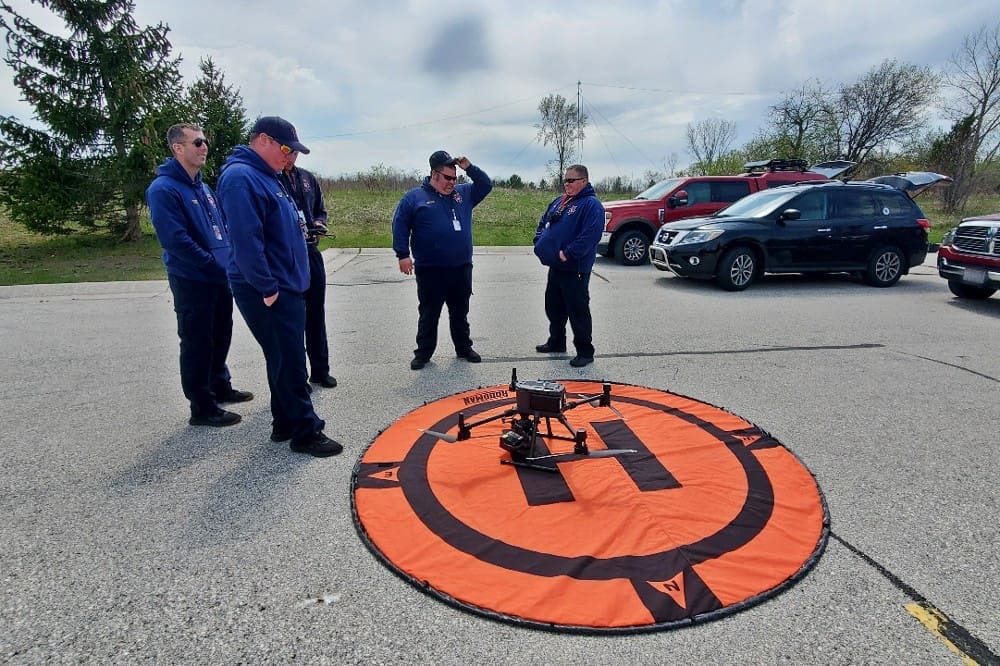
Their main goal during the exercise was testing the ability to share video and information with other providers they don’t typically work with. They were able to send a live video feed from their drone to a livestream that could be viewed in the incident command center in Green Bay or other units in Eau Claire. SIMCOM was the first time they shared drone information with agencies outside of Brown County and across different platforms.
“Any exercise, like this one, prepares us for the worst-case scenario,” said Chatham. “We can ensure that in the time of greatest need, we are ready to go instead of working out the bugs when there is not any time to do that.”
Other activities at SIMCOM included testing communications between different units of government. Participants also evaluated how to approach situations where communications between responders may be difficult or interrupted because of damage to infrastructure, radio frequency differences, or power outages.
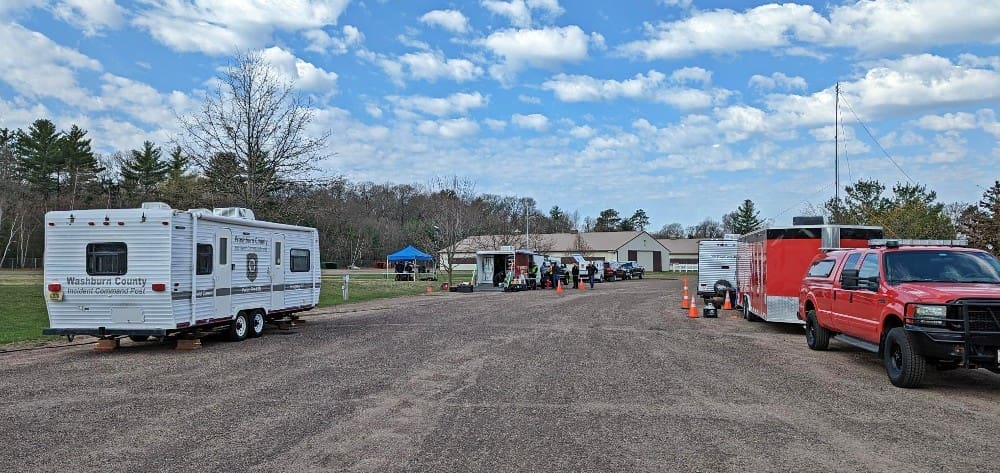
“What makes SIMCOM so effective is the support and assistance from our local partners,” said James Williams, one of the exercise’s organizers and WEM training and exercise officer. “Exercising is critical to how we test plans, processes, and equipment so we are ready for all threats and hazards that may arise in our state.”
SIMCOM 2023 was made possible through the support of local partners, which include UW-Green Bay, Brown County Emergency Management, and Eau Claire County Emergency Management.
The location and scenario for SIMCOM changes each year. The date and location for SIMCOM 2024 has not yet been announced.

